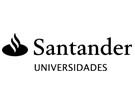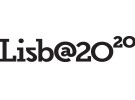



Publication in the Diário da República: Despacho nº 14433/2024 - 05/12/2024
6 ECTS; 2º Ano, 2º Semestre, 30,0 T + 15,0 PL + 30,0 TP + 5,0 OT , Cód. 912322.
Lecturer
- Luís Carlos Duarte dos Reis (1)
(1) Docente Responsável
(2) Docente que lecciona
Prerequisites
Not applicable.
Objectives
Since Mechanics of Materials is a fundamental engineering science used in the design of structures, machines, and other types of equipment, this course aims to provide students with the following knowledge:
A Design: ensuring that structures can withstand the loads and service conditions to which they will be subjected.
B Sizing/Dimensioning: understanding that the sizing process involves analysing stresses and strains in the components, as well as considering the mechanical properties of the selected materials.
C Scope of the course: the studies carried out in this course focus on components made of simple elementssuch as bars, beams, and shaftsforms that most frequently appear in machines and structures designed by mechanical engineers. Gerber beam systems, three-hinged frames, trusses, and other structural systems will also be studied.
Program
Review of Statics:
Free-body diagram.
Internal force diagrams.
Types of loading.
Safety factor.
Beam Loading:
Supports and loading in beams.
External and internal forces in beams.
Torsion:
Strain in cylindrical shafts.
Stresses in the elastic domain.
Angle of twist in the elastic domain.
Design of shafts under shear.
Pure Bending:
Stresses and strains in pure bending.
Strains in the cross-section.
Eccentric axial loading in a plane of symmetry.
Unsymmetrical bending.
General case of unsymmetrical bending.
Transverse Loading:
Determination of shear forces in a horizontal plane of the beam.
Determination of shear stresses.
Shear stresses in common beam sections.
Generalized loading.
Design of Beams and Shafts:
Shear force and bending moment diagrams.
Relationship between loading, shear force, and bending moment.
Design of prismatic beams.
Beams of equal strength.
Design of transmission shafts.
Calculation of Beam Deflection by Integration:
Elastic curve equation.
Determination of the elastic curve from distributed loading.
Superposition method.
Evaluation Methodology
Continuous assessment:
Knowledge will be evaluated through assignments completed during the semester (20%) and a written exam (80%).
Assessment during the regular exam period and resit:
Knowledge will be evaluated through a written exam (100%).
Bibliography
- Beer, F. e Mazurek, D. (2021). Resistência dos Materiais. S. Paulo: McGraw-Hill ISBN 9786558040088
- C. Potter, M. e A. Nash, W. (2014). Resistência dos Materiais. (Vol. 5ª Edição). (pp. 200). S. Paulo: Bookman
- Hibbeler, R. e Nascimento, S. e Simões da Cunha Jr, S. (2018). Resistência dos Materiais. (Vol. 10ª Edição). (pp. 768). Pearson: Editora Pearson
(2006). Resistência dos Materiais. S. Paulo: McGraw-Hill
(2011). Mecânica Vectorial para engenheiros - Estática. S. Paulo: McGraw-Hill
(2011). Mecânica dos Materiais. Lisboa: Fundação Calouste Gulbenkian
(2011). Mecânica dos Materiais. S. Paulo: AMGH Editora Ltda (Mc Graw-Hill)
(2015). Resistência de Materiais. Portugal: Edição de autor
Teaching Method
Lectures with an expository approach, where the fundamental principles of the course are presented and illustrated, are complemented by practical classes focused on solving exercises and developing applied assignments.
Software used in class
SolidWorks Simulation.
MDSolids.
Microsoft Teams.
PowerPoint.
Word.
Excel.
PDF.

















